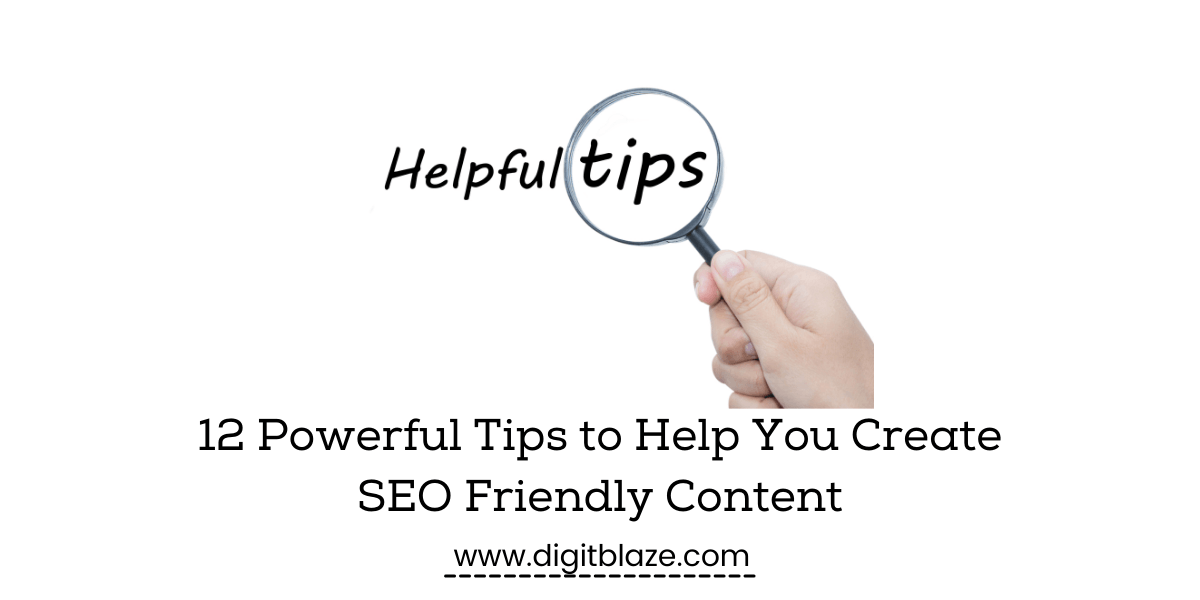Organic traffic is the best kind of traffic out of all the sources of traffic for your website as it is free and has the potential to bring traffic for a long time.
Creating SEO-friendly content is one of the best ways to get organic traffic to your site as it helps you rank well.
You must be wondering, but how should I create SEO Friendly content.
Well in this article I am going to tell you how to create SEO-friendly content.
So without wasting time let’s dive into it.
What is SEO Friendly content?
SEO-friendly content is a process where you write, edit and format your content for a particular search intent query in such a way that the search engine algorithm takes notice of it and ranks your content for that particular query.
Follow these 11 points to optimize your content to make it more SEO friendly
1. Begin with Research
The very first thing you need to understand is, what type of blog post you are going to write,
For instance, you can categorize your post into the following types
- Tutorials and how-to
- Reviews
- Comparisons
- List posts
- Case studies
Once you understand the type of your blog content you can start with the research accordingly.
For Research follow these points
- Research should be original
- Reach out to experts in the niche if necessary
- Read the already existing content around your topic
- Use Google suggestions to understand the type of queries around your topic
- Use Google trends to know the trend around that topic throughout the year
- Find all the resources like articles, videos, images, and any other content that may be helpful for your own research.
2. Keyword Research
The second step for good SEO-friendly content is doing keyword research for the topic.
Before you start writing your content is good to identify your target keywords, as you can easily incorporate them when writing.
Use your keywords strategically and don’t overdo it, as in don’t stuff the keywords throughout your article as it will only affect the readability and engagement rate.
Keyword research points
- Understand the intent of your short and long-tail keyword
- Find the search volume for the keyword
- Use keyword research tools to know the keyword difficulty
- Use Google autocomplete to know what people are searching around your keyword
- Use Google suggestions for the same as above
- Use Google trends to know the keyword trend throughout the year
- Use Google Keyword planner a free tool from Google to find more related keywords
To learn more about keyword research read this article

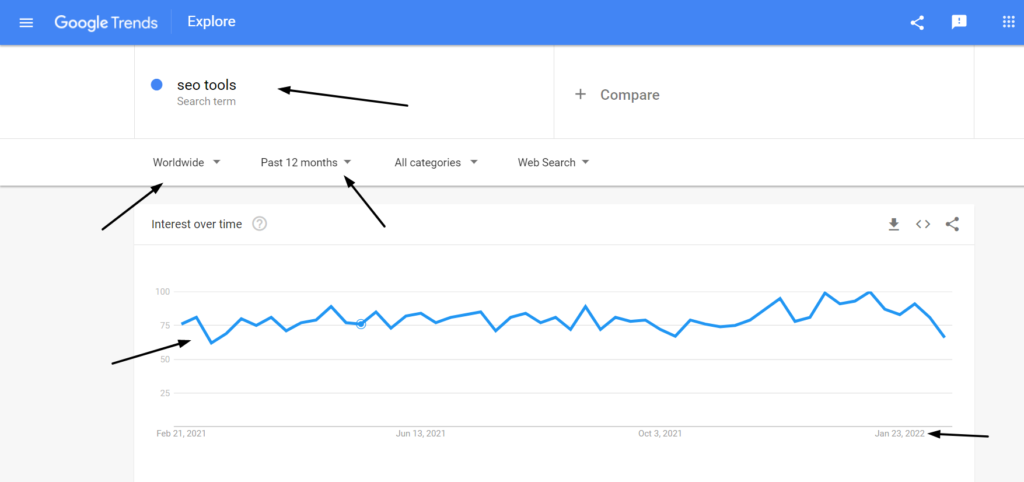
3. Article length
The ideal article length depends on what type of topic content you are writing.
The best way to decide is to understand the search intent of the searcher.
There are SEO tools like SEMrush, ubbersuggest that will help you out with this by just writing your focused keyword.
But to understand it without any use of SEO tool as per my personal experience,
A topic that deals with in-depth guides or tutorials, “a detailed info topic”
needs at least 2100 to 2600 words to get ranked.
And for topics like a checklist or anything whose search intent is short specific to the point needs to be around 1000 to 1600 words to get ranked.
4. Interlinking
Interlinking is one of the best On-Page SEO methods that help you to increase the overall engagement of your site.
It is always good to interlink your post to each other but the topic should be related to each other.
This suggests that you are genuinely trying to provide some high-quality content that helps the reader.
When interlinking, use the anchor text and highlight it, make it bold or colored, and make sure you link it to the focused keyword of the other post.
5. Image Optimization
It is no surprise that using images increases the overall on-page engagement of your post.
But you need to optimize your images for creating SEO-friendly content.
There are two things that you need to consider when doing the image optimization
- Image Size – check the size of the image, make sure you keep the size of the image small between 50kb to 100 kb. The size of the images decides the speed of your site in the long run.
- ALT text, file name, image description – The Alt text written for the images is not visible to the site visitors but it is helpful for the search engines to understand the context of the image.
A proper Alt Text and file description help google to show your images for the relevant search query which helps the overall SEO of your site.
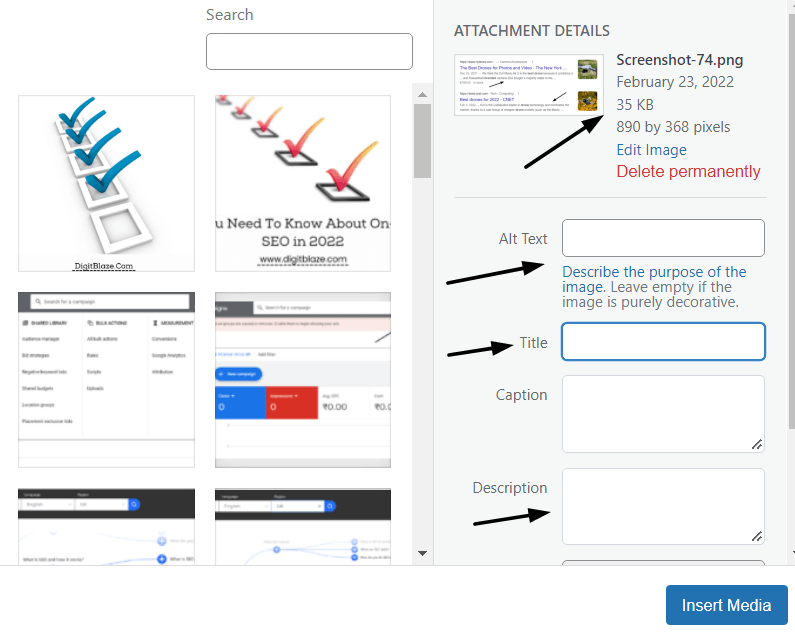
6. Meta Titles
The very first thing that you need to understand is, Meta Titles and Post titles are different.
- Meta Titles – The title that the search engine shows to the searcher
- Post title – This is visible to the reader when they are on your Page.
It is very important to optimize your meta title as per your focused keyword.
Your meta title is the first interaction with the searcher, this is where they are going to decide whether they want to click or not.
To optimize follow these points
- Keep it short, about 60 words
- Use power words to trigger emotions
Use Focused keyword in first 30 words
Use these tools to analyze your Meta title
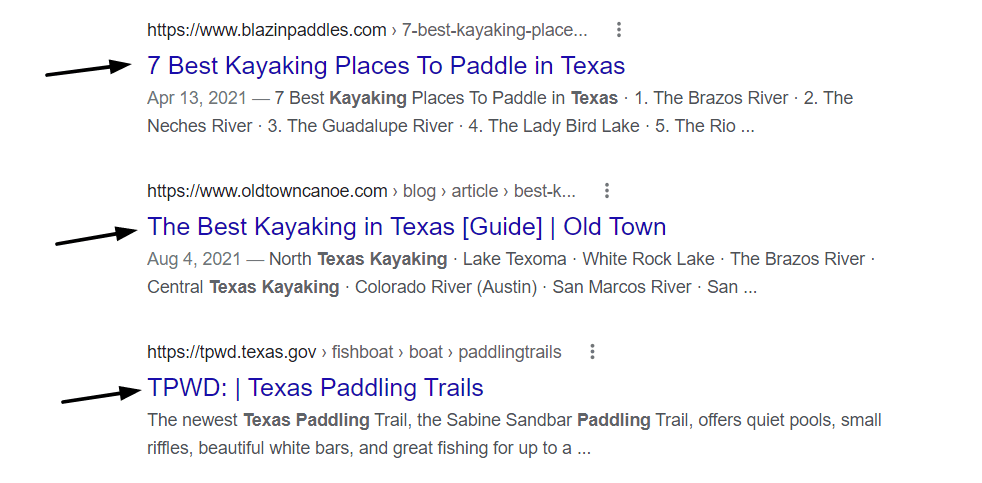
7. Meta Description
A meta description is short summary of your whole content which gets displayed under the meta title in the search engine.
The whole gist of having a good optimized meta description is to lead people to take action, as in click on your link.
You can add meta descriptions via any SEO plugin eg. Yoast SEO plugin, Rank Math SEO plugin.
For a good meta description Follow these points
- It should be short and specific.
- Add your focused keyword to it
- Use easy language, don’t use any complicated words in it.
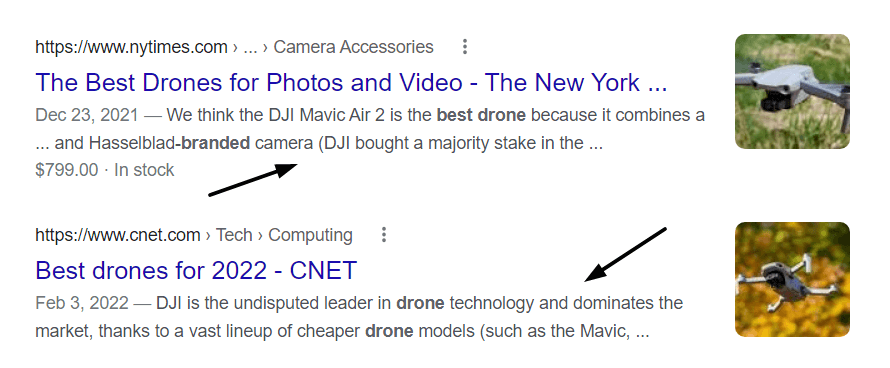
8. Mobile-Friendly Optimization
If you check the stats in google analytics you will understand that about 50 to 60 percent of the traffic comes from mobile,
Hence optimizing your content for mobile becomes very important.
Before publishing always check your content how it appears on both desktop and mobile.
If the content seems to appear large as in the fonts, then optimize it for a better experience.
For a Fast mobile, experience follow these points
- Use light themes like kadence , Astra, etc
- Use plugins like Litespeed cache , wp rocket to boost the speed
- Use small-size images.
- Keep the number of plugins minimum
9. Header Tags
Using header tags systematically is one of the best SEO tactics. Basically header tags tell the search engines what your content is all about sequence-wise.
A messed-up application of header tags is a disaster for SEO-friendly content.
Basically, there is a hierarchy in the header tags, which is like this
- H1 – The main title of your article gives the whole gist of your article. There should be only one H1 tag per article.
- H2 – These are the series of important queries that you answer throughout the article. You can have multiple H2 tags per article.
- H3 – These tags are used as a sub important tag under the H2 tag. Similar to the H2 tag, you can use these multiple times in a single article
There are H4 and H5 tags that work the same as H2 and H3 tags in sequence.
Using these tags systematically and strategically helps your article rank well in search engines.
10. Visual Optimization
Making your article visually appealing is one of the best ways to make it SEO friendly.
Visual optimization is making your article readable, as in the experience of reading should be fluid so as to increase the on page engagement.
To make your article visually appealing, follow these points
- Use good theme
- Use small paragraphs
- Use font size at least 17px
- Don’t overuse colors
- Use Bold to highlight main points
- Use social media share buttons
- Use Table Of Content
11. Optimize and Update Articles
Posting regularly gives Google crawlers a message that this site is in continuous operations and hence gets priority from Google with time.
Mind you this doesn’t happen overnight, as in it takes at least one year of regular posting to get noticed from google.
One more thing that you need to do is, update your old articles, check for broken links, add some new internal-external links.
This also gives Google a good signal about your site.
All this works well for the overall SEO of your site in the long run.
12. SEO optimized URLs
Well-optimized URLs with your focused keyword are very effective for the SEO of your content.
As a beginner this is one of the most ignored tactics by people, I personally have gone through this.
To create SEO friendly URLs follow these points
- Add your focused keyword
- Keep it short
- Keep it simple, don’t complicate by using any symbols.
- Avoid stop words, such as a, an, but, and or.
- Always use small case letters in URL or else link click will result in 404
Final thoughts
Creating SEO-friendly content is a long-term game but once you start getting fruits from it, it lasts for a long time which is very great considering it is free organic traffic.
Many people make it very complicated when it comes to creating SEO-friendly content for a site, but in my opinion, it is not complicated at all.
Just follow these simple steps and optimize, reinvent them according to your understanding and you will start getting results eventually.
To learn more read these articles>>>
PRE-PUBLISH CHECKLIST FOR WORDPRESS BLOG

